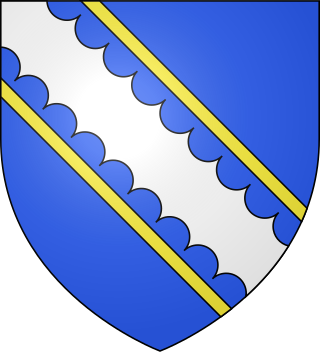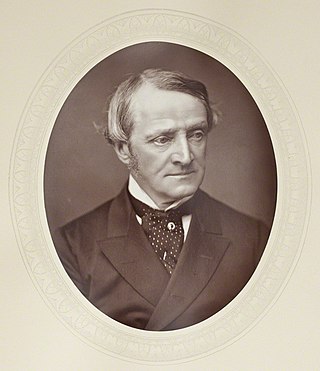
Viscount Cobham is a title in the Peerage of Great Britain that was created in 1718. Owing to its special remainder, the title has passed through several families. Since 1889, it has been held by members of the Lyttelton family.

Baron Clinton is a title in the Peerage of England. Created in 1298 for Sir John de Clinton, it is the seventh-oldest barony in England.
Earl Fortescue is a title in the Peerage of Great Britain that was created in 1789 for Hugh Fortescue, 3rd Baron Fortescue (1753–1841), a member of parliament for Beaumaris and Lord-Lieutenant of Devon.

Baron Stafford, referring to the town of Stafford, is a title that has been created several times in the Peerage of England. In the 14th century, the barons of the first creation were made earls. Those of the fifth creation, in the 17th century, became first viscounts and then earls. Since 1913, the title has been held by the Fitzherbert family.

Earl of Chichester is a title that has been created three times, twice in the Peerage of England and once in the Peerage of the United Kingdom. The current title was created in the Peerage of the United Kingdom in 1801 for Thomas Pelham, 2nd Baron Pelham of Stanmer.

Earl of Lonsdale is a title that has been created twice in British history, firstly in the Peerage of Great Britain in 1784, and then in the Peerage of the United Kingdom in 1807, both times for members of the Lowther family.

Viscount Massereene is a title in the Peerage of Ireland. It was created in 1660, along with the subsidiary title of Baron Loughneagh. From 1665 to 1816 the Skeffington Baronetcy of Fisherwick was attached to the viscountcy and from 1756 to 1816 the Viscounts also held the title of Earl of Massereene. Since 1843 the peerages are united with titles of Viscount Ferrard, of Oriel and Baron Oriel, both in the Peerage of Ireland, and Baron Oriel, in the Peerage of the United Kingdom. The Viscount also holds the subsidiary titles of Baron Loughneagh (1660) and Baron Oriel (1790) in the Peerage of Ireland and Baron Oriel (1821) in the Peerage of the United Kingdom. As Baron Oriel, he sat in the House of Lords until 1999.

Viscount Bridport is a title that has been created twice, once in the Peerage of Great Britain and once in the Peerage of the United Kingdom. The first creation became extinct in 1814, while the second creation is still extant.

Baron Castlemaine, of Moydrum in the County of Westmeath, is a title in the Peerage of Ireland. It was created in 1812 for William Handcock, with remainder to his younger brother Richard Handcock. Handcock represented Athlone in Parliament and also served as Governor of County Westmeath. In 1822 he was further honoured when he was made Viscount Castlemaine in the Peerage of Ireland, with remainder to the heirs male of his body.

Viscount Grandison, of Limerick, is a title in the Peerage of Ireland. It was created in 1620 for Sir Oliver St John, the Lord Deputy of Ireland. He was the descendant and namesake of Oliver St John, whose elder brother Sir John St John was the ancestor of the Barons St John of Bletso and the Earls of Bolingbroke. Moreover, St John's nephew Sir John St John, 1st Baronet, of Lydiard Tregoze, was the ancestor of the Viscounts Bolingbroke and the Viscounts St John.

Earl or Lord of Clanricarde is a title that has been created twice in the Peerage of Ireland, first in 1543 and again in 1800. The former creation became extinct in 1916 while the 1800 creation is extant and held by the Marquess of Sligo since 1916.

Viscount Clermont, of Clermont in the County of Louth, was a title in the Peerage of Ireland. It was created in 1776 for William Fortescue, 1st Baron Clermont, with special remainder in default of male issue of his own to his brother James Fortescue and the heirs male of his body.

Viscount Clifden, of Gowran in the County of Kilkenny, Ireland, was a title in the Peerage of Ireland. It was created on 12 January 1781 for James Agar, 1st Baron Clifden. He had already been created Baron Clifden, of Gowran in the County of Kilkenny, in 1776, also in the Peerage of Ireland. The Viscounts also held the titles of Baron Mendip in the Peerage of Great Britain from 1802 to 1974 and Baron Dover from 1836 to 1899, when this title became extinct, and Baron Robartes from 1899 to 1974, when this title became extinct, the two latter titles which were in the Peerage of the United Kingdom. The interrelated histories of the peerages follow below.

Chichester Samuel Parkinson-Fortescue, 2nd Baron Clermont and 1st Baron Carlingford, known as Chichester Fortescue until 1863 and as Chichester Parkinson-Fortescue between 1863 and 1874 and Lord Carlingford after 1874, was a British Liberal politician of the 19th century.
The title of Earl of Carlingford was created in the Peerage of Ireland for Theobald Taaffe. The Earl bore the subsidiary titles Viscount Taaffe and Baron of Ballymote (1628).

William Henry Fortescue, 1st Earl of Clermont, KP, was an Irish peer and politician.

Thomas Fortescue, 1st Baron Clermont of Ravensdale Park in County Louth, Ireland, was an Irish Whig politician and was the historian of the ancient Fortescue family of 12th century Devonshire origins.
Fortescue is an English surname that originated from the old Norman epithet Fort-Escu. People with the surname include:

Sir Faithful Fortescue (1585–1666), of Dromiskin in County Louth, Ireland, was Governor of Carrickfergus in Ireland, long the chief seat and garrison of the English in Ulster and was a royalist commander during the English Civil War.

William Charles Fortescue, 2nd Viscount Clermont, was an Irish politician.










